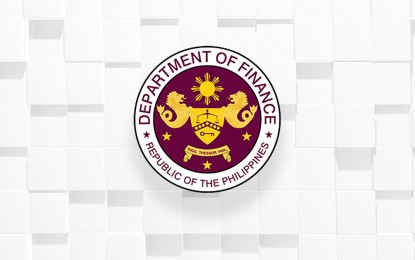
MANILA – Personal income tax (PIT) collections as a share of the gross domestic product (GDP) is highest under the Duterte administration, which averaged 2.4 percent despite the lowering of rates for 99 percent of individual taxpayers starting in 2018 and the pandemic-induced economic slowdown, according to data from the Department of Finance (DOF).
The impressive tax effort in the first five years of the current administration has been attributed to the game-changing measures that President Rodrigo Duterte implemented under his Comprehensive Tax Reform Program (CTRP) since he assumed office in 2016.
A report to Finance Secretary Carlos Dominguez III by the DOF’s Domestic Finance Group (DFG) showed that the emerging PIT effort under Duterte from 2017 to 2021 was achieved even with the economy’s downturn in 2020 and 2021 arising from the strict mobility restrictions to contain the spread of coronavirus disease 2019 (Covid-19).
Assistant Secretary Valery Brion of the DFG said the high PIT effort can be attributed to “better compliance and an increase in registered taxpayers” that followed the enactment in 2018 of the Tax Reform for Acceleration and Inclusion (TRAIN) law that benefited almost all individual taxpayers.
“The PIT reform under TRAIN made income taxation more equitable and a win-win for taxpayers, especially the low-income earners,” Brion said during a recent DOF Executive Committee meeting.
During the administration of the late President Benigno Aquino III (2011-2016), the DOF computed an average PIT effort at 2.1 percent of GDP, which was slightly higher than the average of 1.9 percent under both the Arroyo (2001-2010) and the Ramos presidencies (1993-1998).
Second to the Duterte administration’s average PIT effort was the 2.2-percent rate during President Joseph Estrada’s term. The administration of the late President Corazon Aquino averaged 1.1 percent.
Brion said the highest average value-added tax (VAT) effort was also under the present administration since this tax was introduced in 1988, while its emerging excise tax effort is also highest since 1993.
The Duterte administration’s emerging average corporate income tax (CIT) effort covering the period of 2017 to 2021 is at 3.1 percent, and is second only to the Aquino III administration’s 3.4 percent despite the substantial reduction in the CIT from 30 to 20 percent for micro, small and medium enterprises (MSMEs) and to 25 percent for all other businesses beginning the pandemic year of 2020.
The previous CIT rate of 30 percent was the highest in the region, which made the Philippines less attractive to prospective investors.
“The share of CIT revenues to GDP could have reached 3.2 percent without the pandemic. The CIT remains to be the highest source of Bureau of Internal Revenue (BIR) collections, which accounts for around 22 percent on average of total tax revenues,” Brion said.
For excise tax collections, the Duterte presidency’s average tax effort of 2.2 percent nearly doubles the 1.2 percent of the preceding administrations of Aquino III and Arroyo, and is also higher than the 1.8 percent under Estrada and the 2 percent under Ramos.
This ratio could have been higher at 2.3 percent without the pandemic which would have been at par with the highest average excise tax effort of 2.3 percent during the Corazon Aquino administration.
“The increase under the Duterte administration is owed to the tax reform measures successfully legislated, such as TRAIN and the two ‘sin’ tax reform laws. The fuel marking program, which is one of the tax administration measures under TRAIN, also contributed to the high excise tax effort,” Brion said.
She said TRAIN also imposed an excise tax on sweetened beverages and cosmetic procedures and increased the excise tax on cigarettes, petroleum products, coal, mining, and automobiles.
“This led to an increase in the total BIR and BOC (Bureau of Customs) excise tax effort to 2.1 percent in 2018 from 1.6 percent in 2017. Moreover, the implementation of the two ‘sin’ tax laws in 2020 further improved the excise tax effort to 2.4 percent from 2.3 percent in 2019 despite it being the first year of the pandemic,” Brion added.
On the VAT effort, the Duterte administration’s emerging average is the highest since 1988 at 4.11 percent, which could have jumped to 4.36 percent if not for the pandemic-induced business shutdowns.
The next highest average is 4.05 percent under Aquino III, followed by 3.2 percent under Arroyo, 2.77 percent under Ramos, and 2.67 percent under Estrada.
Under the Corazon Aquino presidency, when the VAT was introduced under Executive Order (EO) No. 273 covering a limited number of goods and services, the VAT effort was 1.91 percent.
“On average, total VAT collections by BIR and BOC account for about a third of total tax revenues. It is the third-highest revenue source for BIR while it is the highest for BOC,” Brion said.
Brion said the DFG attributed the impressive VAT effort under the Duterte administration to the TRAIN law which expanded the VAT base by removing 56 lines of VAT exemptions contained in several other laws; and the improved tax administration, including the ongoing digital reforms and the BOC’s enhanced valuation system. (PR)
